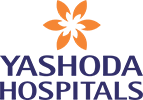Why Choose Yashoda Hospitals for Osteotomy Surgery?
Leading Orthopedic Center: Yashoda Hospitals offers Advanced Osteotomy procedures with personalized care making it the Best Hospital for Osteotomy in Hyderabad
Expert Medical Team: Our skilled panel of orthopaedic surgeons specialises in performing various types of osteotomy procedures, ensuring optimal outcomes and patient satisfaction.
Cutting-edge Facilities: Equipped with advanced technology and modern amenities, our hospital provides a safe and comfortable environment for orthopedic treatments.
Comprehensive Care: From diagnosis to post-operative rehabilitation, our dedicated team provides comprehensive support at every step of the treatment process.




 Appointment
Appointment WhatsApp
WhatsApp Call
Call More
More